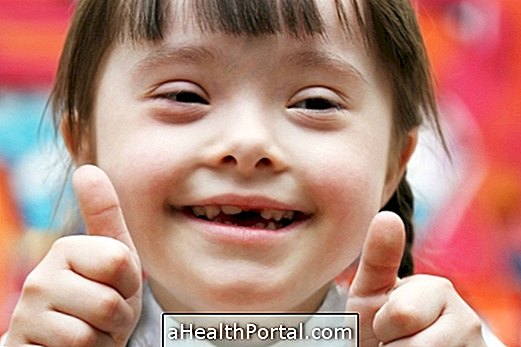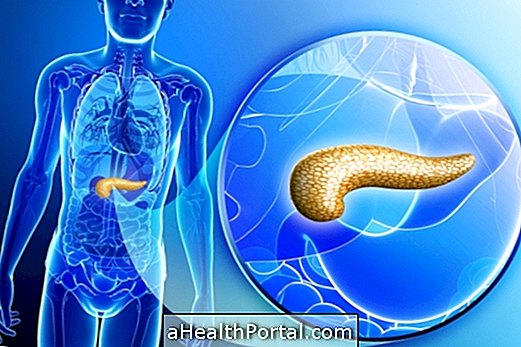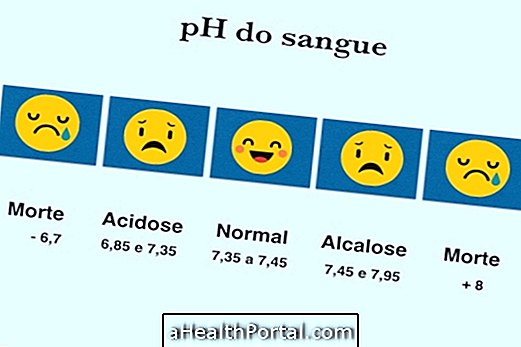Children with Down syndrome are usually identified shortly after birth because of their physical characteristics associated with the syndrome.
Some of the most common physical traits include:
- Eyes slanted, pulled up;
- Nose small and slightly flattened;
- Small mouth but with a larger than normal tongue;
- Ears lower than normal;
- Just a line in the palm of the hand;
- Wide hands with short fingers;
- Increased space between the big toe and the other toes.
However, some of these characteristics may also be present in newborns who do not have the syndrome and can vary greatly among people with the syndrome. Thus, the best way to confirm the diagnosis is to do a genetic test, in order to identify the existence of the 3 copies of chromosome 21.

Common Health Problems
In addition to the common physical characteristics, people with Down syndrome are even more likely to have heart problems, such as heart failure, for example, or thyroid disease, such as hypothyroidism.
In almost half of the cases, there are still changes in the eyes that may include strabismus, difficulty seeing from a distance or near, and even cataracts.
Since most of these problems are not easy to identify in the first few days, it is common for the pediatrician to go through a number of childhood tests, such as ultrasound, echocardiogram, or blood tests to find out if there is any associated disease.
Learn more about the exams recommended for children with Down syndrome.
Cognitive Features
All children with Down syndrome have some degree of delay in intellectual development, especially in skills such as:
- Arrive objects;
- Be alert;
- Stay seated;
- Walk;
- Speak and learn.
The degree of these difficulties may vary from case to case, however, all children will eventually learn these skills, although they may take longer than another child without the syndrome.
To shorten learning time, these children can participate in speech therapy sessions with the speech therapist, so that they are encouraged to express themselves early, facilitating the process of learning how to speak, for example.






















